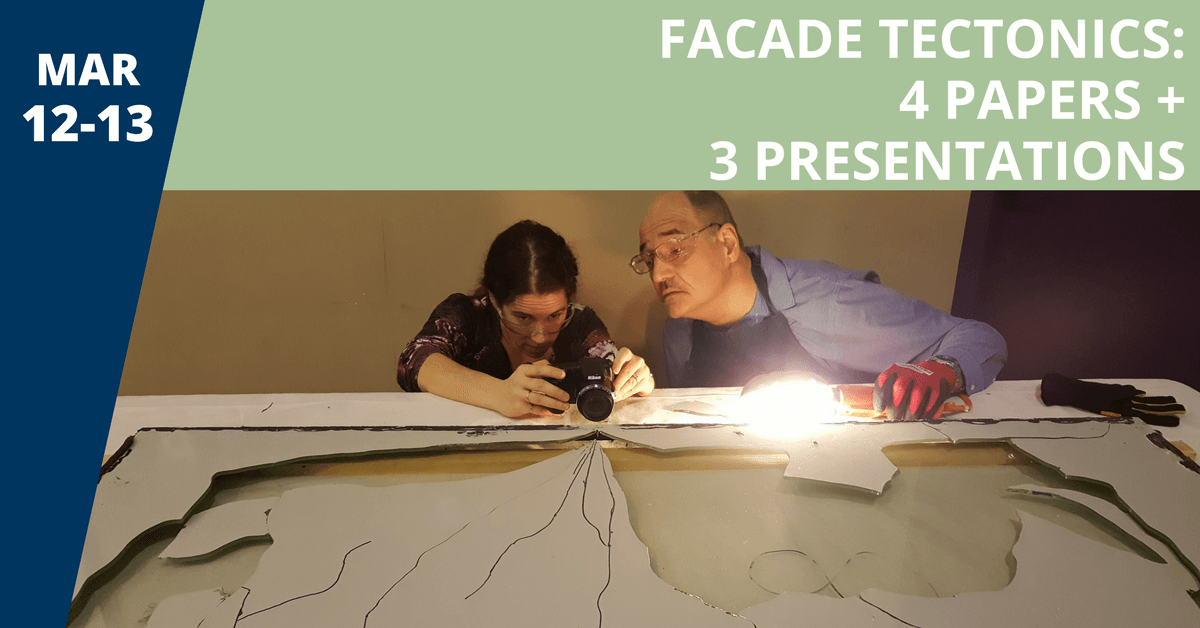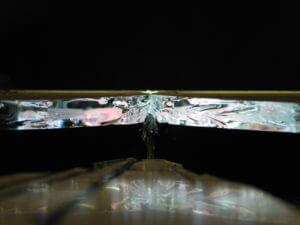
- This event has passed.
Facade Tectonics World Congress 2018: 4 Papers, 3 Presentations
March 12, 2018 - March 13, 2018

We’re excited to announce that our Building Science Team has had 4 papers accepted and will be presenting 3 sessions at this year’s Facade Tectonics World Congress in Los Angeles.
Presentations include:
Quantifying the Benefit of Venting Glazed Spandrels to Reduce Glass Breakage and Control Moisture
Presented by Julien Schwartz, Building Energy Consultant, and co-authored with Stéphane Hoffman, Patrick Roppel and Neil Norris
Tuesday, March 13th – 10:30 am
Watt Hall 1
Presentation Overview:

The objective of this paper is to address questions related to the real need to vent spandrel sections to control heat buildup. This paper covers a field study that includes monitoring spandrel sections with a combination of single- and double-glazing, three different venting scenarios, and both clear- and opacified-glass scenarios. The data collected will be used to calibrate 3-D thermal and CFD simulations. The computer simulations will allow for cross-validation of the field monitoring data and broaden the relevance of the findings through the investigation of other conditions including different spandrel designs, venting scenarios, and climates.
The field monitoring suggests that venting the spandrel cavity has little to no impact on reducing thermal stress in clear-glass double-glazed spandrel sections, and a limited impact in clear-glass single-glazed spandrel sections. With the higher solar absorption associated with an opacifier coating, venting shows even less impact on reducing thermal stress, with some data suggesting an adverse effect. Also, in the temperate climate of this field study, the condensation risk was found to be very low regardless of the venting configuration. Based on these preliminary results, there is reason to question the need to vent double-glazed spandrel sections. The 3-D thermal and CFD model is currently being calibrated and findings will be presented in a subsequent paper. Preliminary simulations results show good agreement with the field monitoring data.
Vintage Vinyl: Lock-strip Gasket Replacement and Remediation
Presented by Mike Plewacki, Senior Building Science Consultant
Monday, March 12th – 8:30 am
Watt Hall 1
Presentation Overview:
Mid-century through 1980’s buildings with lock-strip or “zipper-gasket” glazing systems are an ever present part of the urban landscape in many cities across North America. Although these systems are considered outdated by many and seldom used in new construction, the systems have performance attributes that should merit respect.
For many in the façade community, lock-strip gasket facades are often dismissed as a system to be removed and replaced with modern aluminum curtain wall. While this may be practical in certain situations, it is far from the only option available and not always the right option for the owner’s budget or maintaining the original architecture of a building.
Lock-strip facades continue to endure but age has taken its toll on the functionality of what was once a revolutionary glazing system. By maintaining the lock-strip gasket façade and upgrading glazing when possible, building performance can be restored or even increased as retrofit technology improves.
Remedial options are available for a lock-strip gasket façades that focus on preserving and maintaining the primary elements and appearance of the system from simple remediation efforts such as the installation of exterior “wet-seals” to limit air and water infiltration, to complete replacement and reglazing.
Improved curtain wall performance (reduced air infiltration, lowered solar heat gain and improved acoustical performance) are achieved by introducing modern insulating glass with a low-e coating and emerging technologies, such as vacuum insulating glass (VIG), present possibilities for replacement of an original monolithic glazed system for increased energy performance. Reglazing also provides the opportunity to increase spandrel insulation, or change the aesthetic of the façade by introducing (or removing) existing spandrel panels.
While the benefits of the above are appealing, lock-strip gasket replacement projects are not immune to challenges. As with most remediation projects there are technical considerations to address.
Fully Tempered Glass in Spandrel Applications: Assessing the Residual Strength after Inner Light has Shattered
Presented by Stéphane Hoffman, Vice President / Senior Building Science Specialist
Tuesday, March 13th – 8:30 am
Stauffer Hall 200
Presentation Overview:
Recent years have seen an increase use of insulated glazing units (IGUs) in spandrel applications to visually blend the appearance between the vision and spandrel glass. There has been instances of glass breakage for this type of design attributed to thermal stress. Recent study indicate that IGUs in spandrel application see higher thermal stress than with traditional single glazed spandrel and that venting the spandrel cavity does little to minimize this increase in thermal stress. Recent research supports the theory that the increased in thermal stress is leading to breakage of the inner light due to lowered strength in heat strengthened ceramic opacified glass.
In response to this phenomenon considerations are being given to using fully tempered glass for the inner light when using a ceramic frit opacifier. The later raises interesting questions regarding the performance of the glazing in the event of a failure of the inner light. While fully tempered lights have a long history of use in IGUs for safety reasons, it is not uncommon to have the occasional incidence of spontaneous breakage. However, in vision glazing units these failures are readily apparent and promptly addressed. In spandrel applications, the failure of a fully tempered inner light may go unnoticed. This raises questions as to how much residual strength a unit with a shattered inner light would have to resist wind loads. The result of testing of structurally glazed IGUs with a fully tempered inner light that has been shattered demonstrated the residual strength was sufficient to resist an initial application design wind loads. The results provide guidance to designers considering the use of fully tempered glass in spandrel applications.
PAPER – Silicone Spandrel Glass Opacifiers: Mitigating Glass Breakage Risk from Thermal and Other Stresses
Co-authored by Stéphane Hoffman, Vice President / Senior Building Science Specialist, and George Torok, Senior Building Science Specialist – this session will be presented by a representative outside of Morrison Hershfield
Monday, March 12th – 8:30 am
Watt Hall 1
Presentation Overview:
Curtain wall design commonly uses insulating glass units for vision and spandrel glazing to provide better visual harmonization of building façade glass. Risks with this design approach include higher thermal stresses, especially when low-emissivity coatings are used on insulating glass units in spandrel areas. Ceramic enamel frit – commonly used to opacify spandrel glass – is known to induce a bending strength reduction of up to 50%. The ability of ceramic enamel frit coated glass to resist thermal stress is similarly reduced. Multiple incidences of thermal stress related fracture have occurred with heat-strengthened, ceramic enamel frit opacified spandrel glass. An increased chance of spontaneous breakage, by nickel sulfide inclusions, may occur if ceramic enamel frit opacified spandrel glass is fully-tempered to withstand the thermal stresses that it is exposed to.
Silicone spandrel glass coatings have been examined as a solution to prevent the strength reduction in heat-treated glass when ceramic enamel frit is applied as an opacifier. Four-point bending tests were used to investigate the flexural strength of coated heat-strengthened and fully-tempered glass. Ball drop testing was used to investigate the impact resistance of coated fully-tempered glass.

